DevSecOps - Kubernetes DevOps & Security
Additional Topics
Demo Prometheus Alert Manager Alerts Slack Notifications
In this tutorial, you’ll learn how to integrate Prometheus (deployed by Istio) with Alertmanager, define custom alerting rules, and send notifications to Slack. We’ll cover:
- Inspecting Istio’s default Prometheus configuration
- Adding Alertmanager to Prometheus
- Writing and applying alerting rules
- Configuring Slack notifications in Alertmanager
- Testing alerts and silencing notifications
1 Inspect the default Istio Prometheus configuration
Istio’s add-ons include a Prometheus deployment whose ConfigMap defines scrape targets and placeholder alerts. It also deploys:
- A ServiceAccount for Prometheus
- A ConfigMap containing
prometheus.ymlandalerting_rules.yml - ClusterRoles, RoleBindings, Service, and Deployment specs
Browse the Istio v1.9.0 repository on GitHub:

Under samples/addons, you’ll find the Prometheus example:
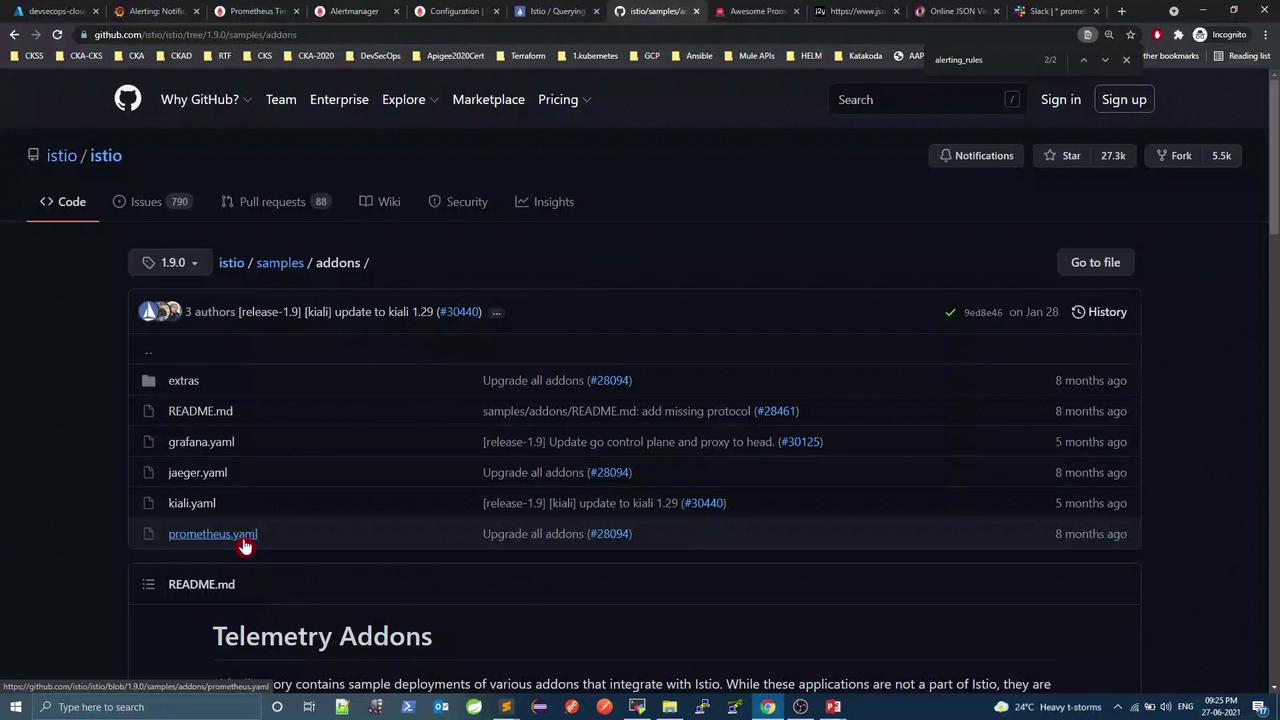
Excerpt from the default ConfigMap:
apiVersion: v1
kind: ConfigMap
metadata:
name: prometheus
namespace: istio-system
labels:
component: "server"
app: prometheus
data:
alerting_rules.yml: |
alerts: {}
prometheus.yml: |
global:
evaluation_interval: 1m
scrape_interval: 15s
scrape_timeout: 10s
rule_files:
- /etc/config/recording_rules.yml
- /etc/config/alerting_rules.yml
- /etc/config/rules
- /etc/config/alerts
scrape_configs:
- job_name: prometheus
static_configs:
- targets: ["localhost:9090"]
bearer_token_file: /var/run/secrets/kubernetes.io/serviceaccount/token
# …additional scrape_configs…
Note
By default, there is no alerting: section in prometheus.yml pointing to Alertmanager.
2 Integrate Prometheus with Alertmanager
Open the Prometheus
ConfigMapin theistio-systemnamespace:kubectl -n istio-system edit configmap prometheusUnder
prometheus.yml, add:alerting: alertmanagers: - static_configs: - targets: - devsecops_demo.eastus.cloudapp.azure.com:9093Save, then restart Prometheus:
kubectl -n istio-system delete pod -l app=prometheusIn the Prometheus UI, go to Status → Configuration to verify the Alertmanager endpoint.
3 Define custom alerting rules
Edit alerting_rules.yml in the same ConfigMap to add your rules. For inspiration, see Awesome Prometheus Alerts:
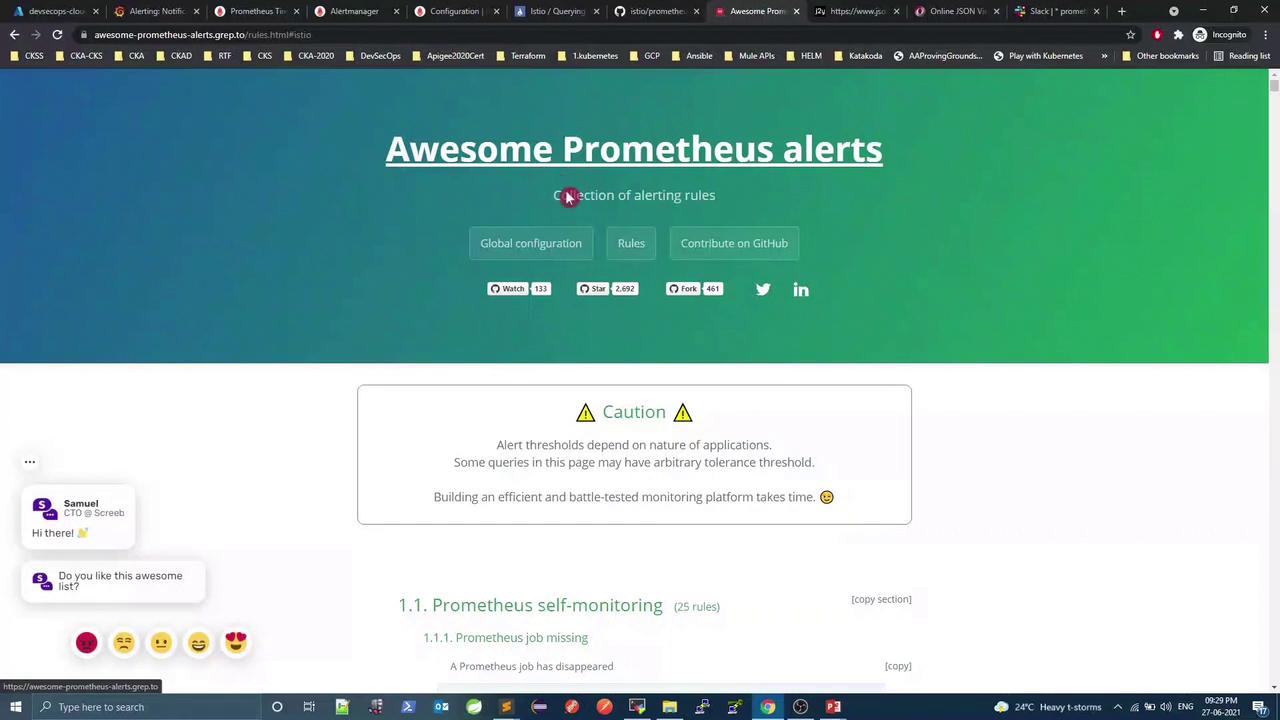
3.1 Example rule group
groups:
- name: Infrastructure
rules:
- alert: InstanceDown
expr: up == 0
for: 1m
labels:
severity: critical
annotations:
title: "Instance {{ $labels.instance }} down"
description: "{{ $labels.instance }} of job {{ $labels.job }} has been down for more than 1 minute."
- alert: KubernetesPodClientError
expr: istio_requests_total{reporter="destination",response_code="403"} > 10
for: 1m
labels:
severity: warning
annotations:
summary: "Kubernetes pod client error (instance {{ $labels.instance }})"
description: "Pod {{ $labels.instance }} of job {{ $labels.job }} reported client-side errors"
Apply the rules and restart Prometheus:
kubectl -n istio-system delete pod -l app=prometheus
In the Prometheus UI under Alerts or Rules, you should see both alerts listed (initially inactive):
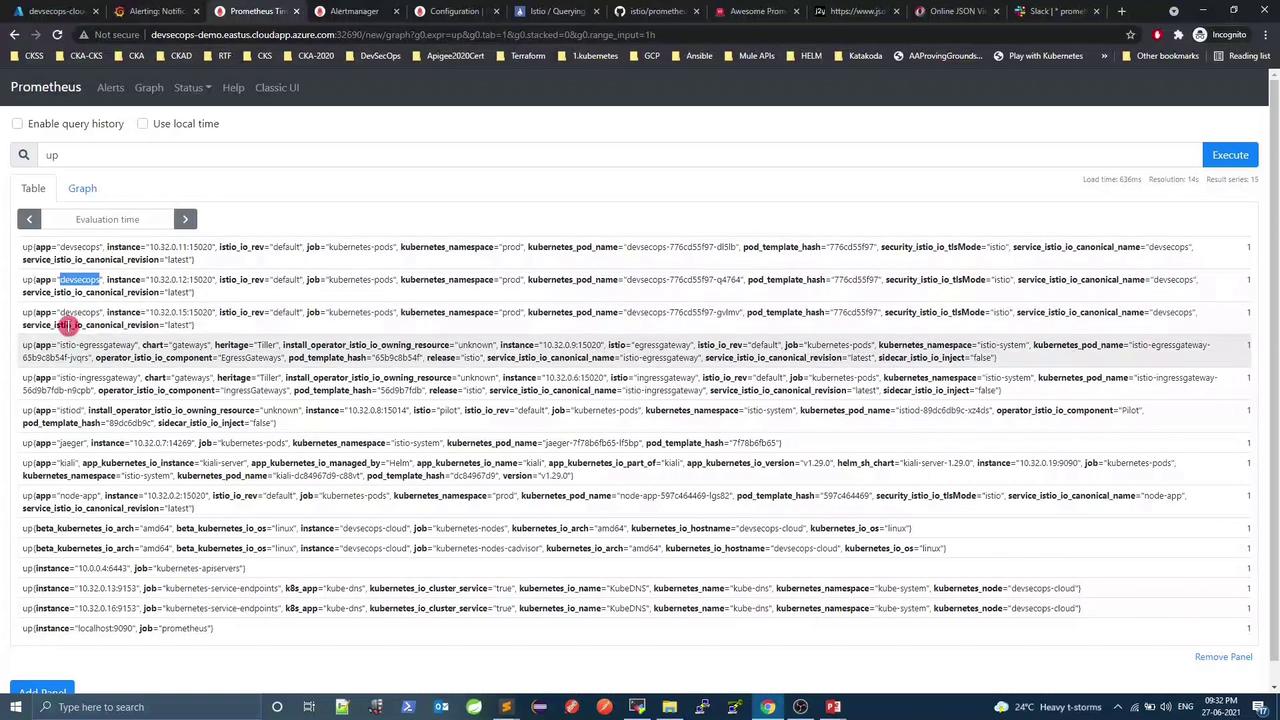
4 Configure Alertmanager for Slack notifications
Update your alertmanager.yml:
global:
resolve_timeout: 1m
slack_api_url: 'https://hooks.slack.com/services/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'
route:
receiver: 'slack-notifications'
receivers:
- name: 'slack-notifications'
slack_configs:
- send_resolved: true
channel: '#prometheus'
icon_url: 'https://avatars3.githubusercontent.com/u/3380462'
title: >
{{ if eq .Status "firing" }}
{{ .Alerts.Firing | len }} {{ .CommonLabels.alertname }} firing
{{ else }}
{{ .CommonLabels.alertname }} resolved
{{ end }}
title_link: '{{ template "slack.default.titlelink" . }}'
text: |
{{ range .Alerts }}
*Alert:* {{ .Annotations.summary }} {{ if .Labels.severity }}- `{{ .Labels.severity }}`{{ end }}
*Description:* {{ .Annotations.description }}
*Details:*
{{ range .Labels.SortedPairs }} • *{{ .Name }}:* {{ .Value }}
{{ end }}
{{ end }}
Reload Alertmanager:
curl -X POST http://<alertmanager-host>:9093/-/reload
5 Test end-to-end alerting
5.1 Simulate HTTP 403 errors
Deploy an Nginx pod and service in namespace
prod:kubectl -n prod run nginx-403-demo --image=nginx --port=80 kubectl -n prod expose pod nginx-403-demo --port=80Disable Istio mTLS:
kubectl -n istio-system patch peerauthentication default \ --type merge \ -p '{"spec":{"mtls":{"mode":"DISABLE"}}}'Remove the default page to force 403 responses:
kubectl -n prod exec -it nginx-403-demo -- bash -c 'rm /usr/share/nginx/html/index.html'Flood the pod with requests:
kubectl -n prod exec -it nginx-403-demo -- bash -c 'while true; do curl -s localhost; sleep 0.1; done'
After ~60 s, KubernetesPodClientError should fire:
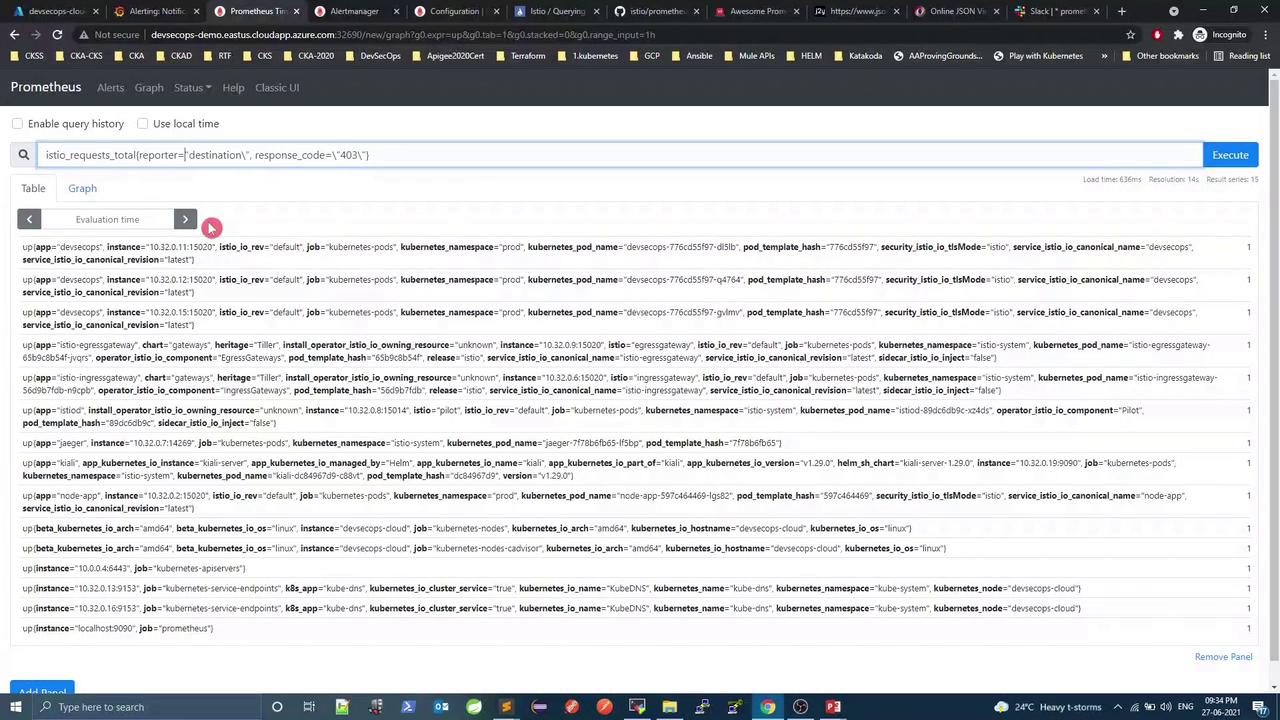
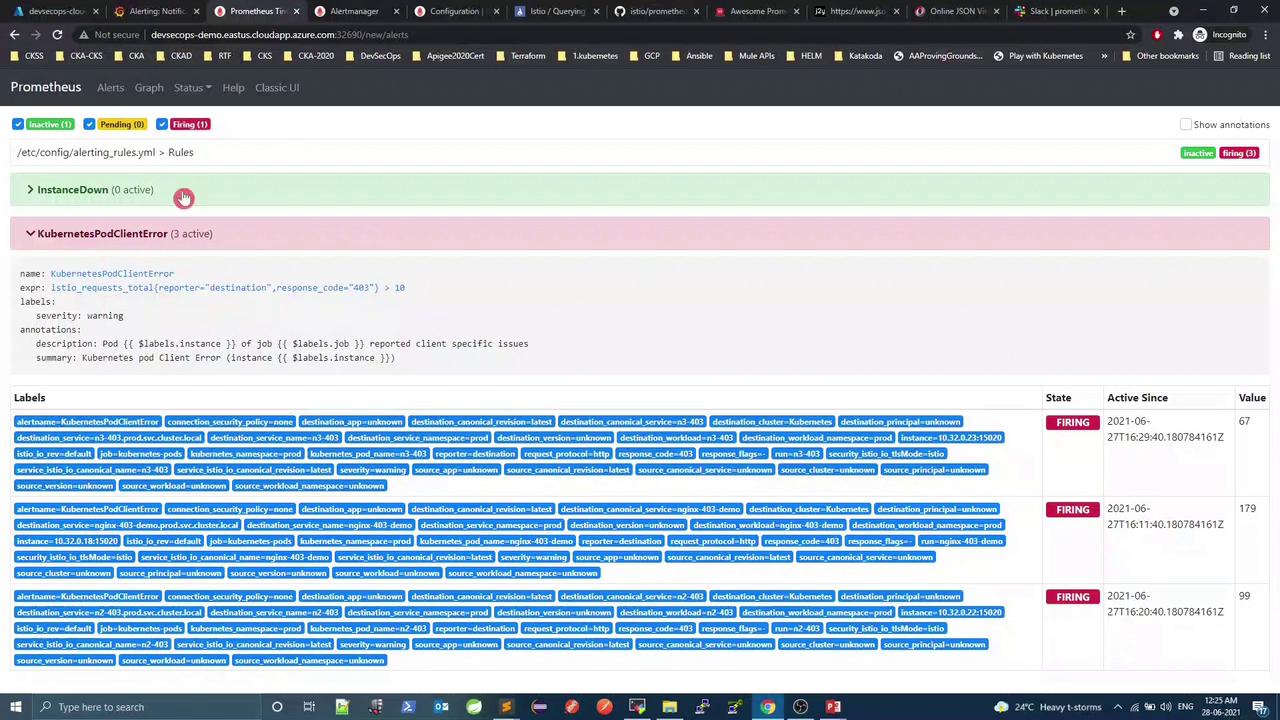
Check Alertmanager for firing alerts, then inspect Slack:
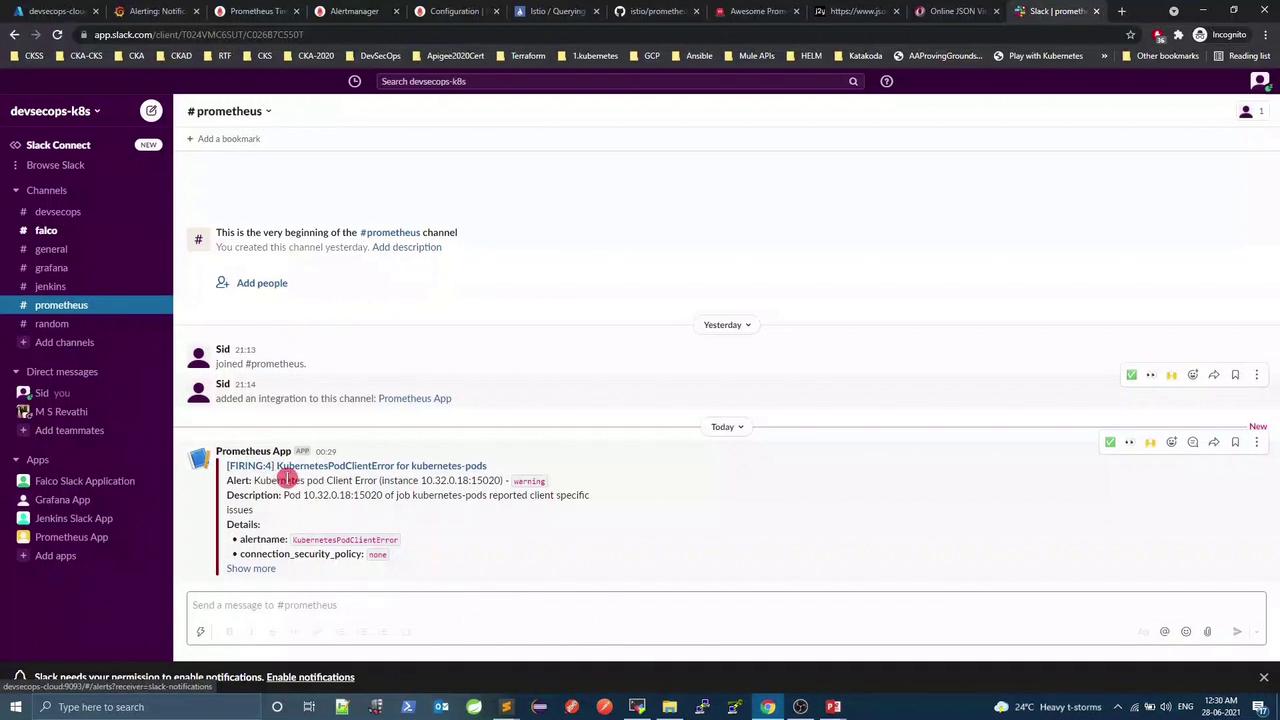
5.2 Silence active alerts
- In Alertmanager, go to Silences → New Silence
- Add matchers (e.g.,
alertname="KubernetesPodClientError") - Set the duration and save
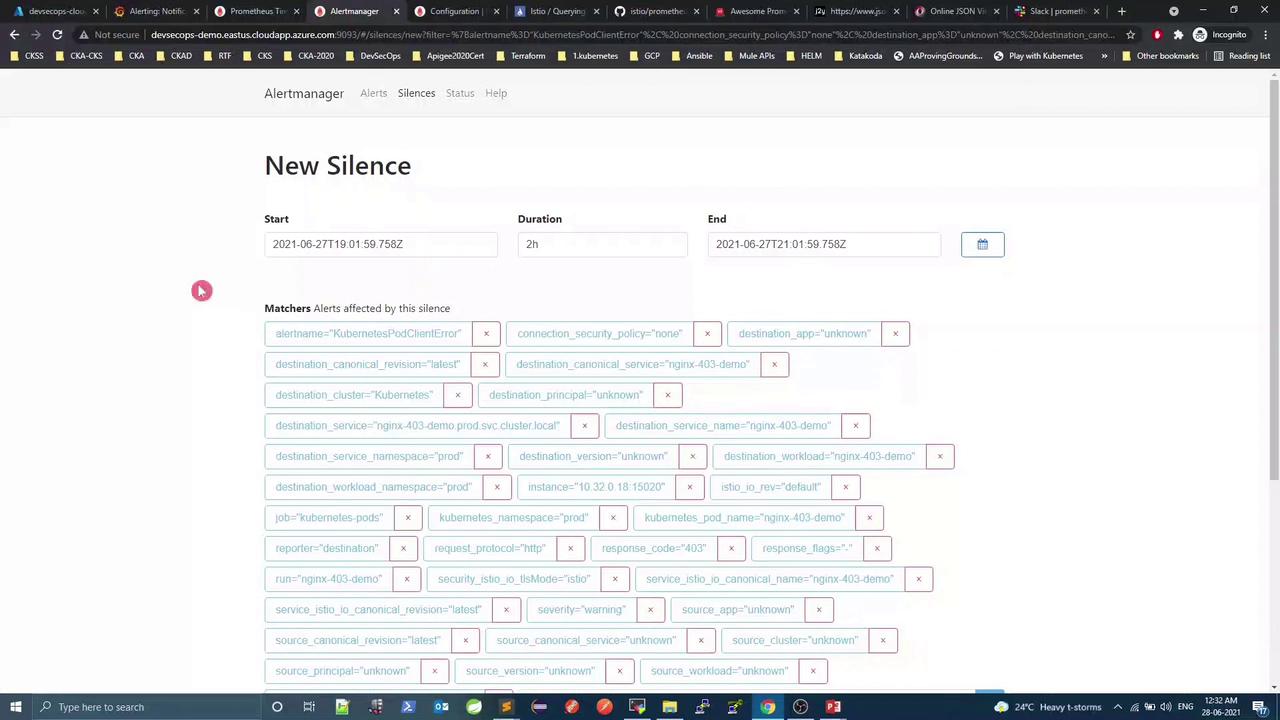
View active silences:
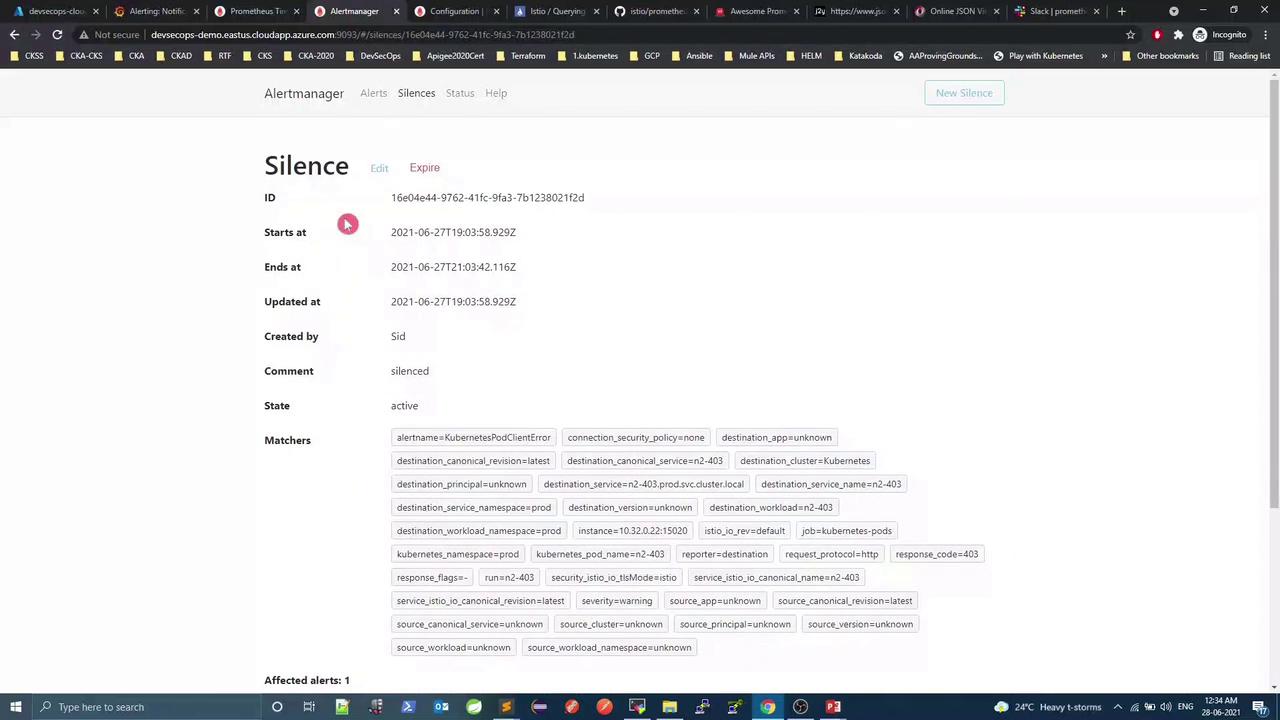
Deploy additional pods (n2-403, n3-403, n4-403); only unsilenced alerts will appear in Slack:

5.3 Test the InstanceDown alert
Delete one of the demo pods to trigger InstanceDown:
kubectl -n prod delete pod n5-403-demo
After ~1 min, InstanceDown will fire and send a Slack notification:

Conclusion
You have now:
- Updated Istio’s Prometheus
ConfigMapto point at Alertmanager - Defined custom alerting rules in Prometheus
- Configured Alertmanager to send Slack notifications
- Tested alert firing, notification delivery, and silencing
Extend this setup with other receivers such as email, PagerDuty, or OpsGenie.
Links and References
- Istio Prometheus Add-ons
- Alertmanager Slack Integration
- Awesome Prometheus Alerts
- Kubernetes Documentation
- Slack Incoming Webhooks
Watch Video
Watch video content